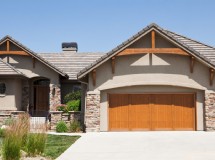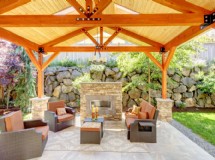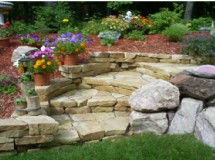Under floor heating is a fantastic way to warm your home. It transforms a cold house into a warm and cozy home. This type of heating is especially good where there is a cold type of flooring or a need for extra warmth for instance in a bathroom. Under floor heating is a form of central heating which uses heat conduction and radiant heat rather than forced air heating which relies on convection. in the form of heating the warmth is provided by circulating heated water or by electric mesh, cable or film heaters.
Under floor heating is by no means a new thing. It is probably the first kind of central heating invented and was first used by the Romans. Initially the preserve of the rich, under floor heating became increasingly commonplace in public buildings and villas, particularly in the colder regions of the Roman Empire.
If you go back to your primary school education you probably remember learning about the Romans and their liking for building new things. The Roman system comprised of ducts that underlay the floor (itself built on raised brick piles), and flues that were built into walls. Hot air or steam from fires circulated up through this system, warming the floor and walls, with heat passing into the rooms.
The furnace was the heating source of this way of heating and was always on the outside of the house. As the fire always started from one place one room was always hotter than the rest, as the air flowing under the floor would naturally lose some of its heat as it was travelling under the floor. This system was very labour intensive as someone was always required to feed the flames. The Romans had a large slave base so this would not be a good way to work today and also with the use of wood in houses today would also perhaps be a fire hazard.
Under floor heating today is much more sophisticated. It relies on thermostats in every room making it an environmentally sound way of heating your home.
Under floor heating can often be a hindrance when it comes to maintenance but most systems are so easy to install that this is not really a problem. The only other problem with under floor heating is that the floor covering needs to be compatible a highly insulating floor covering (such as thick carpets or cork) can reduce the efficiency of under floor heating.
For more information on under floor heating go to timberland.
Under floor heating is by no means a new thing. It is probably the first kind of central heating invented and was first used by the Romans. Initially the preserve of the rich, under floor heating became increasingly commonplace in public buildings and villas, particularly in the colder regions of the Roman Empire.
If you go back to your primary school education you probably remember learning about the Romans and their liking for building new things. The Roman system comprised of ducts that underlay the floor (itself built on raised brick piles), and flues that were built into walls. Hot air or steam from fires circulated up through this system, warming the floor and walls, with heat passing into the rooms.
The furnace was the heating source of this way of heating and was always on the outside of the house. As the fire always started from one place one room was always hotter than the rest, as the air flowing under the floor would naturally lose some of its heat as it was travelling under the floor. This system was very labour intensive as someone was always required to feed the flames. The Romans had a large slave base so this would not be a good way to work today and also with the use of wood in houses today would also perhaps be a fire hazard.
Under floor heating today is much more sophisticated. It relies on thermostats in every room making it an environmentally sound way of heating your home.
Under floor heating can often be a hindrance when it comes to maintenance but most systems are so easy to install that this is not really a problem. The only other problem with under floor heating is that the floor covering needs to be compatible a highly insulating floor covering (such as thick carpets or cork) can reduce the efficiency of under floor heating.
For more information on under floor heating go to timberland.
SHARE





































